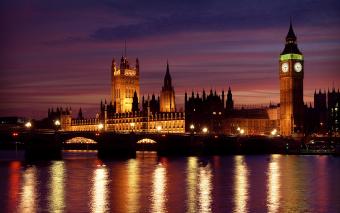
By Mark Johnson
Posted: 23rd March 2012 11:42
The Houses Of Parliament
The Houses of Parliament and Big Ben are one of Britain's most famous and recognisable landmarks. The Palace of Westminster is a historic building with exquisite architecture that holds both the Houses of Commons and Lords. The Houses of Parliament are full of history and nostalgia and represent democracy in Great Britain. Statues and monuments stand to great people such as Winston Churchill who delivered many famous speeches here during the war.
London Eye
The London Eye offers a unique opportunity to view all of London from the biggest observation wheel in the world. Spectacular views of the Houses of Parliament, Tower Bridge and the Tower of London. The London Eye offers a unique timed admission booking system. All passengers must have a timed ticket with boarding time before they fly.
Madame Tussauds
London's most famous tourist attraction; why not visit Madame Tussauds and get up close to your favourite celebrities at this amazing day out in London. Wax figures of Hollywood's glam comedy chicks have been unveiled. The A-list 'lovelies' are hanging out in the Blush area of the attraction in an authentic hair and make-up movie trailer set, where guests can join them for a totally unique, thoroughly impressive photo.
St Paul’s Cathedral
The present St Paul's is the fifth cathedral to have stood on the site since 604, and was built between 1675 and 1710, after its predecessor was destroyed in the Great Fire of London. This was the first cathedral to be built after the English Reformation in the sixteenth century, when Henry VIII removed the Church of England from the jurisdiction of the Pope and the Crown took control of the Church's life. Features include the Whispering Gallery. The Crypt contains the tombs of Admiral Lord Nelson, Duke of Wellington and also Sir Christopher Wren.
Westminster Abbey
The Abbey was founded by Edward the Confessor and consecrated in 1065. Every king and queen of England since William the Conqueror has been crowned here with the exception of both Edward V and Edward VIII and many are buried here too. The abbey also holds the Coronation throne as well as monuments and plaques that help you to remember Britain's past such as tributes to Britain's armed forces. The abbey also holds many famous peoples death masks including Henry VII's.
Buckingham Palace
Buckingham Palace is one of the most famous Palace's in the world and is the official London residence for H.M Queen Elizabeth II as well as being used extensively by other members of the royal family. By visiting the Palace you would be getting an insight into the Royal family as well as sampling magnificent rooms like the Ballroom which is used for many purposes including state banquets for visiting Heads of State. From the visit you will also see one of the finest working stables in existence, the Royal Mews as well as sampling some of the finest works of art from the Royal collection.
London Transport Museum
London Transport Museum collects items that reflect all aspects of the history of public transport in London from 1800 to the present day. Ranging from uniform buttons to complete Tube trains, the Museum's collections are the most comprehensive of their type anywhere in the world, numbering some 375,000 items. A stunning variety of vehicles, signs, photographs, posters, drawings, uniforms and architectural material make up the core of the collection. You will also find a well documented insight into the social history of transport, with games, models and small items relating to both staff and passenger experience.
The Royal Observatory
The Royal Observatory Greenwich was founded in 1675 by Charles II to find out the 'so-much desired longitude of places for perfecting the art of navigation.' The architect was Sir Christopher Wren, who designed St Paul's Cathedral and was himself an astronomer. The Observatory was built on the foundations of Duke Humphrey's Tower which had stood on the site since 1438. John Flamsteed, the first Astronomer Royal, moved into the new building, now named Flamsteed House, in July 1676.



Comments